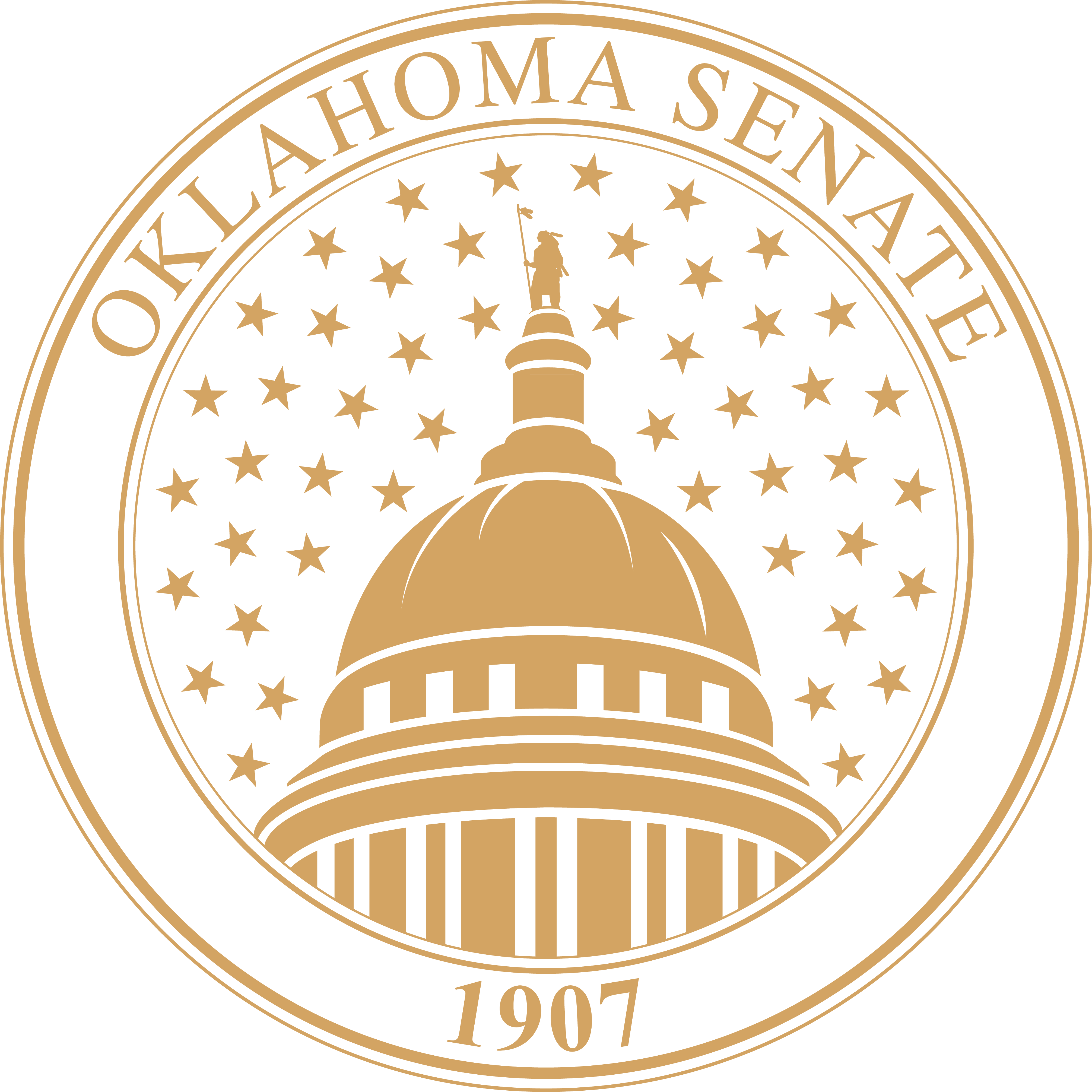Painting Commemorates McAlester's First Coal Production and KATY Railroad
In honor of Oklahoma's coal and railroad industry, a painting depicting the relationship between McAlester's first coal production and the KATY railroad was unveiled Wednesday in the Senate. The painting, by world-renown artist Wayne Cooper, was sponsored by the Puterbaugh Foundation and commissioned by the Oklahoma State Senate Historical Preservation Fund.
"This painting portrays an incredible time in our state's history when we were entering the age of industrialization," said Charles Ford, president of the preservation fund. "Being that this is our centennial, we couldn't have picked a better year to have such a painting added to the Capitol's collection. As we move forward in this era of high technology, this painting will remind us of our humble beginnings."
Oklahoma's coal industry grew alongside the state's railroad industry in the late 1800's. The relationship between the two industries was mutually beneficial. Railroad companies bought coal to use as fuel; coal companies used the railroad to move coal to other markets.
The usefulness of coal was noted when French explorers saw Native tribes in eastern Oklahoma using it to make their fires hotter for blacksmithing. In time, coal became an important resource, being used for heating and cooking and as fuel for steam engines. Steam then started to be used to turn wheels that ran steamboats, trains and machines in factories.
J.J. McAlester came to Indian Territory looking for coal. While he searched for it, he set up a trading post at Bucklucksy. Being married to a Choctaw woman, he was adopted into the tribe and was allowed to mine for coal and sell it outside of the Territory. But he needed a way to move his coal to market. So he traveled to Kansas where he persuaded railroad officials with the Missouri, Kansas and Texas Railroad (known as the MKT or "KATY") to build tracks into the Territory. The route was set and once the tracks reached Bucklucksy, the name of the town was changed to McAlester.
The state's first coal mine was near Krebs. As the mines grew in size, so did the towns in the area. Needing workers, mining companies went to Europe to recruit workers and many European immigrants settled in the area to help mine the coal.
The painting was sponsored by the Puterbaugh Foundation named after Jay Garfield Puterbaugh, who was one of the founding fathers of the coal and rail industry in southeastern Oklahoma. He founded the McAlester Fuel Company which brokered, marketed and transported much of the coal mined around McAlester. The Puterbaugh Foundation makes grants to benefit Oklahoma education, health care, medical research, youth and children's programs and other projects that will enhance the quality of life in Oklahoma. The Foundation is chaired by Justice Steven Taylor of the Oklahoma Supreme Court.
"The Puterbaugh Foundation is very proud to sponsor this historic painting which commemorates the coal and railroad heritage of McAlester, Oklahoma,” said Taylor. “We do this in honor of J.G. Puterbaugh and the people of McAlester."
Cooper's works can be found in many private and public collections worldwide, including 13 paintings which hang in the State Capitol. His latest work is an oil painting on canvas that took him around six months to complete.
"It was a pleasure getting to work on this historical painting of McAlester. I enjoyed visiting the city and its coal museum as well as going around to the old mines sites. That helped me get the lay of the land and the general feeling of the painting," said Cooper. "This work has created a lot of interest because there are so many things included in the work and that has made working on this piece all that much enjoyable."
This and other art commissioned by the Oklahoma State Senate Historical Preservation Fund, Inc. can be found on the Internet at www.oksenate.gov.
 Oklahoma Senate
Oklahoma Senate

